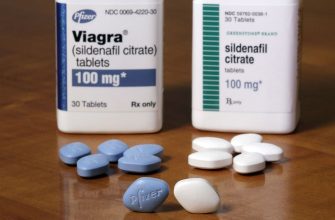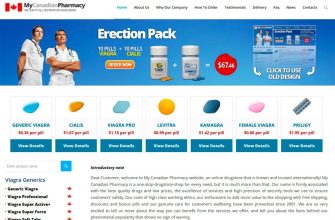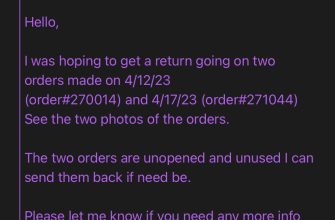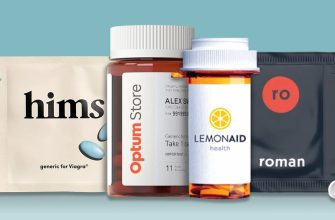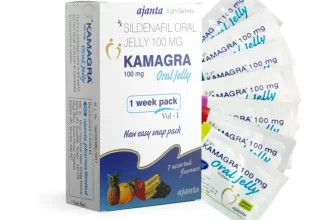Need medication? Skip the pharmacy line and explore online pharmacies offering convenient delivery. Many reputable online pharmacies verify prescriptions, ensuring you receive the correct medication safely and securely.
Check for licensing and accreditation before making a purchase. Look for verified customer reviews to gauge the reliability and speed of service. Compare prices across different platforms, but prioritize safety and legitimacy over the lowest cost. Consider factors like delivery time and customer support responsiveness when making your choice.
Always confirm the pharmacy’s return policy. Understand your rights as a consumer and know what recourse you have if there are issues with your order. Prioritize pharmacies that offer secure payment gateways and data encryption to protect your personal and financial information. Reading online reviews helps you identify potential issues before you commit to a purchase.
- Purchasing Medicine Online: A Comprehensive Guide
- Prescription Medications: Safe Practices
- Over-the-Counter Medications: Smart Choices
- Data Security and Privacy
- Legality and Regulations: Where to Buy Safely
- Checking Credentials
- Prescription Requirements
- Security Measures
- Reporting Issues
- International Purchases
- Conclusion
- Verifying Online Pharmacies: Spotting Legitimate Sites
- Prescription Requirements: Obtaining Necessary Authorizations
- Doctor’s Role
- Pharmacy Verification
- Payment Security: Protecting Your Financial Information
- Delivery and Shipping: Understanding the Process
- Packaging and Handling
- Delivery Confirmation
- Addressing Shipping Issues
- Potential Risks and Side Effects: Informed Decision-Making
- Customer Support and Dispute Resolution: Addressing Issues
Purchasing Medicine Online: A Comprehensive Guide
Always verify the online pharmacy’s legitimacy using resources like the National Association of Boards of Pharmacy (NABP) Verified Internet Pharmacy Practice Sites® program. Check for a physical address and contact information; avoid sites lacking transparency.
Prescription Medications: Safe Practices
Obtain prescriptions from a licensed healthcare provider. Never use online pharmacies that offer medications without a prescription. Compare prices across reputable pharmacies, but prioritize safety and verification over the lowest cost. Understand your insurance coverage before ordering to avoid unexpected expenses. When ordering, confirm that your prescription is correctly filled; request tracking information and delivery confirmation.
Over-the-Counter Medications: Smart Choices
Read product reviews and check expiration dates. Confirm the seller’s return policy before making a purchase. Consider buying from well-known retailers with established online presences. Beware of unusually low prices, which may indicate counterfeit or substandard products. Store medications properly to maintain their efficacy and safety.
Data Security and Privacy
Use secure payment methods; avoid sites requesting unnecessary personal information. Look for sites using HTTPS encryption (indicated by a padlock icon in the browser address bar). Review the pharmacy’s privacy policy to understand how your data is handled. Report suspicious activity to the appropriate authorities.
Legality and Regulations: Where to Buy Safely
Prioritize licensed online pharmacies. Check for verification seals from organizations like LegitScript or PharmacyChecker. These independent bodies assess adherence to regulatory standards.
Checking Credentials
- Confirm the pharmacy’s physical address and contact information.
- Verify their licensing with the relevant national regulatory body (e.g., the FDA in the US, MHRA in the UK).
- Look for a licensed pharmacist’s contact details. You should be able to reach a healthcare professional with questions.
Avoid pharmacies that offer unusually low prices or do not require a prescription. These are often red flags indicating potential illegality or sale of counterfeit medication.
Prescription Requirements
Always obtain a valid prescription from a licensed healthcare professional before purchasing medication online. Never ignore this step.
- Your doctor can provide you with a prescription.
- Some online pharmacies might offer telehealth consultations, allowing you to get a prescription remotely, but carefully vet the provider’s credentials.
- Ensure the online pharmacy adheres to prescription regulations in your country.
Security Measures
- Look for websites using HTTPS encryption (indicated by a padlock icon in your browser’s address bar). This protects your personal and financial data.
- Review the pharmacy’s privacy policy to understand how they handle your information.
- Pay using secure payment methods; credit card payments with fraud protection are generally safer than other options.
Reporting Issues
If you suspect a website is operating illegally, report it to the relevant authorities in your country. Your safety and access to legitimate medications depend on reporting practices.
International Purchases
International purchases present additional risks. Regulations vary significantly between countries. Always verify the pharmacy’s compliance with both your home country’s and the seller’s regulations before completing a transaction. Incorrect medication or fraudulent practices are more common with international orders.
Conclusion
Buying medication online safely requires diligence. Following these steps can significantly reduce the risks.
Verifying Online Pharmacies: Spotting Legitimate Sites
Check for a valid license and registration. Look for a physical address and contact information readily available on their website. Legitimate pharmacies usually display their license number prominently.
Verify their accreditation. Reputable online pharmacies often display accreditation seals from organizations like the Verified Internet Pharmacy Practice Sites (VIPPS) or the National Association of Boards of Pharmacy (NABP). These accreditations indicate compliance with high standards.
Scrutinize their security practices. Secure websites use HTTPS (indicated by a padlock icon in your browser’s address bar). This encryption protects your personal and payment information.
Read customer reviews and testimonials. Independent review sites can provide valuable insight into the pharmacy’s reliability and customer service. Pay attention to recurring themes in customer feedback.
Examine their pricing structure. Be wary of suspiciously low prices, which may signal counterfeit medications. Prices should be reasonable and transparent, easily accessible on the website.
Confirm their return policy. Legitimate pharmacies often have clearly stated return policies in case of damaged goods or incorrect orders. This demonstrates a commitment to customer satisfaction.
Contact the pharmacy directly. Test their responsiveness and professionalism by asking a question about their services. A prompt and helpful response suggests a legitimate operation.
Consult your physician or pharmacist. They can offer guidance on safe online pharmacies and help you identify potentially risky websites. Always get professional advice before ordering any medication online.
Prescription Requirements: Obtaining Necessary Authorizations
First, verify your online pharmacy’s legitimacy. Check for licensing and accreditation details. Look for secure ordering procedures, including SSL encryption.
Next, upload a clear photo of your prescription. Ensure all details, including the doctor’s signature and prescribing information, are visible. Some pharmacies offer online prescription upload portals for ease of use.
Doctor’s Role
Contact your physician if you need a new prescription or a refill. Many doctors now offer online appointment scheduling or telehealth services to facilitate this process. Inquire about their specific procedures for electronic prescriptions.
Pharmacy Verification
Expect the pharmacy to verify your prescription with your doctor. This is a standard practice to prevent fraud and ensure prescription accuracy. Be prepared to provide additional information if requested, such as your date of birth or insurance details. Timely responses expedite this process.
After verification, the pharmacy will process your order. You’ll receive tracking information once your medicine ships. Note that shipping times vary depending on the pharmacy and your location.
Payment Security: Protecting Your Financial Information
Always verify the website’s security before entering payment details. Look for “https” in the URL and a padlock icon in your browser’s address bar. This indicates a secure connection using SSL encryption.
Use strong, unique passwords for all online accounts, including your pharmacy accounts. A strong password combines uppercase and lowercase letters, numbers, and symbols. Consider using a password manager to generate and store these passwords securely.
- Avoid using public Wi-Fi when purchasing medication online. Public networks lack encryption, making your data vulnerable.
- Monitor your bank and credit card statements regularly for unauthorized transactions. Report any suspicious activity immediately to your bank.
- Choose payment methods that offer buyer protection. Credit cards often provide better fraud protection than debit cards.
Be wary of websites requesting excessive personal information beyond what’s needed for processing a transaction. Legitimate pharmacies rarely request your social security number or driver’s license number for online purchases.
- Read the pharmacy’s privacy policy carefully. Understand how they collect, use, and protect your data. Look for policies clearly outlining data encryption and security measures.
- Check customer reviews and testimonials to gauge the online pharmacy’s reputation for security and reliability. A lack of positive feedback on security might indicate potential risks.
- Familiarize yourself with your bank or credit card company’s fraud protection policies. Know the procedures for disputing fraudulent charges.
Only use reputable online pharmacies. Research the pharmacy before making a purchase to ensure it’s licensed and follows industry best practices for data security.
Delivery and Shipping: Understanding the Process
Check the pharmacy’s shipping policy before ordering. Most offer standard and expedited options. Standard shipping usually takes 3-7 business days, while expedited can be as fast as 1-2 days, but costs more.
Track your order. Most online pharmacies provide a tracking number; use this to monitor your package’s progress. You’ll typically receive email updates. Be aware of potential delays due to weather or high order volume.
Packaging and Handling
Your medicine will be packaged securely to protect it from damage during transit. Expect discreet packaging; the contents won’t be visible from the outside. Some pharmacies use temperature-controlled packaging for medications requiring specific storage conditions.
Delivery Confirmation
You’ll likely need to sign for the delivery. If you won’t be home, select a delivery option allowing for signature at a designated location (like a local post office or a neighbour) or designate an alternative delivery address. Review delivery options carefully at checkout.
Addressing Shipping Issues
Contact the pharmacy’s customer service immediately if your package is delayed or damaged. They can investigate and provide solutions, such as reshipping your order or issuing a refund. Keep your tracking number handy when contacting customer support.
Potential Risks and Side Effects: Informed Decision-Making
Always verify the online pharmacy’s legitimacy with your local regulatory body before placing an order. Check for licensing and accreditation details.
Counterfeit medications pose a significant threat. Purchase only from reputable sources to minimize this risk. Look for secure payment gateways (HTTPS) and verified customer reviews.
Incorrect dosages can lead to adverse reactions. Carefully review the prescription and instructions. If unsure, contact your doctor or pharmacist for clarification.
Some medications interact negatively with other drugs or supplements. Inform your healthcare provider about all medications and supplements you’re taking before purchasing online.
Shipping delays can affect the efficacy of time-sensitive medications. Factor in delivery times when ordering. Consider using expedited shipping if necessary.
| Risk | Mitigation |
|---|---|
| Incorrect dosage | Double-check prescription and instructions; contact healthcare provider if needed. |
| Drug interactions | Disclose all medications and supplements to your doctor. |
| Delayed shipping | Factor in delivery times; consider expedited shipping. |
| Counterfeit drugs | Use only verified and reputable online pharmacies. |
| Lack of consultation | Always consult your doctor before starting a new medication. |
Always consult your doctor or pharmacist before starting any new medication, even if purchased online. They can provide personalized advice and identify potential risks specific to your health situation.
Customer Support and Dispute Resolution: Addressing Issues
Check the online pharmacy’s website for multiple contact options: phone, email, and live chat. A readily available FAQ section addressing common questions shows a commitment to customer service.
Before ordering, review the pharmacy’s return policy and dispute resolution process. Understand the timeframe for returns and the methods for initiating a dispute. Look for clear explanations and contact details for their dispute resolution team.
If an issue arises, document everything. Keep copies of your order confirmation, payment receipts, and any communication with the pharmacy. This detailed record strengthens your case significantly.
If you experience problems, contact the pharmacy’s customer support immediately. Clearly describe your issue and provide all relevant documentation. Expect a response within 24-48 hours. If the response is unsatisfactory, escalate the issue to a supervisor or manager.
Consider using a credit card or payment method that offers buyer protection. Many cards provide chargeback options if you don’t receive your order or receive a damaged or incorrect product.
If you can’t resolve the issue directly with the pharmacy, explore external dispute resolution channels. Your country may have a consumer protection agency you can contact to file a complaint. You may also want to seek legal advice if the dispute is complex or involves a significant amount of money.
Leaving an online review, positive or negative, provides valuable feedback to other customers and may influence the pharmacy’s practices. Be factual and avoid emotional language in your reviews.


